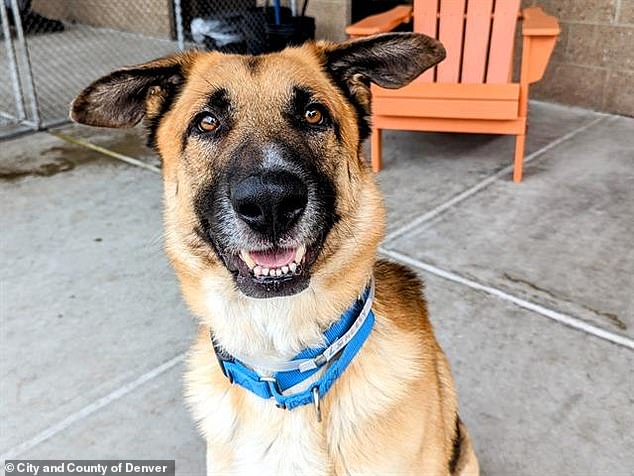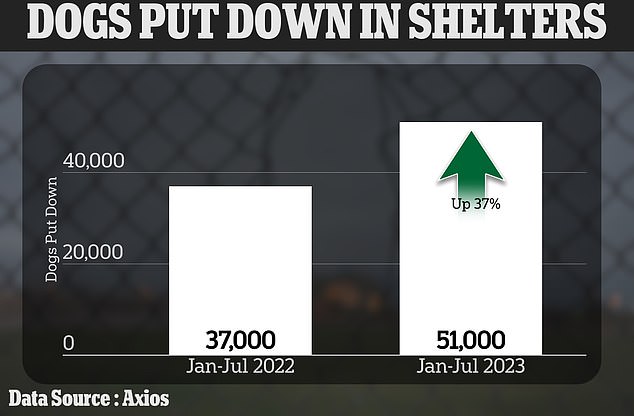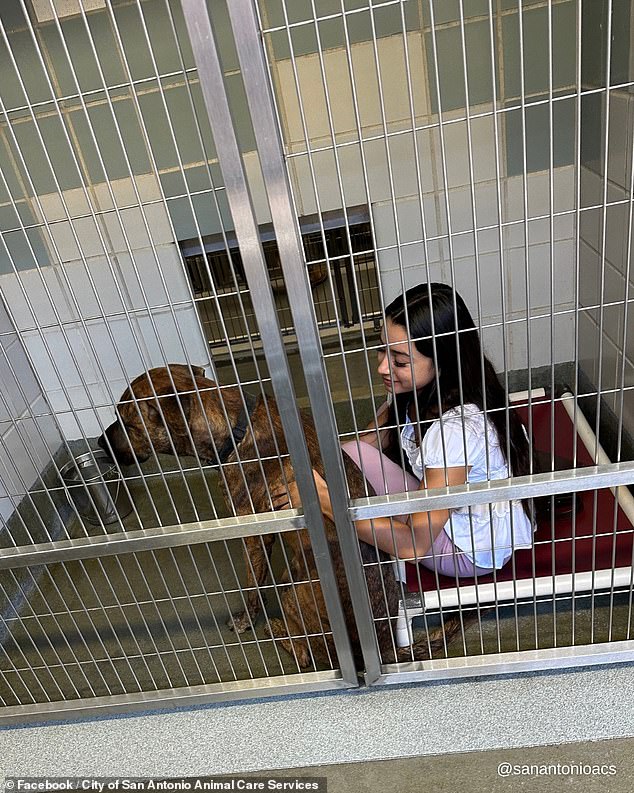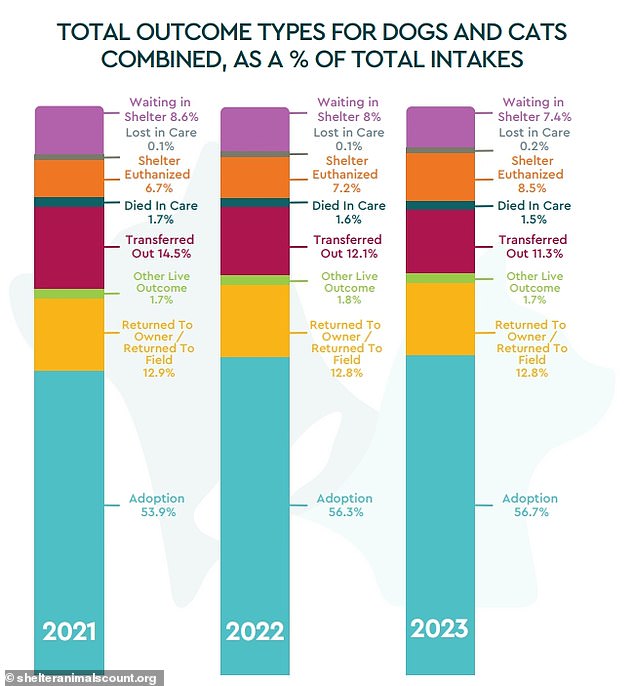Euthanasia rates at U.S. animal shelters hit three-year high – with number of dogs put to sleep rising a shocking 37% in six months due to soaring cost of living and post-pandemic buyer’s remorse
Animal shelters across the United States are struggling to cope with a massive influx of unwanted pets that has forced them to put down 51,000 dogs in the first six months of this year.
While the pandemic increased the number of people wanting to own a pet, the return to normal life led to reckoning for some.
Fewer animals were neutered during the pandemic, as veterinarians closed their offices, increasing the number of strays.
Rising inflation over the past year has strained household finances, leaving some pet owners unable to afford the upkeep of their animals and forcing others to move into smaller homes.
The number of animals transferred to shelters has reached a three-year high, but that has not been matched by an increase in the number of people wanting new pets.
The result is a 37 percent increase, year over year, in the number of dogs placed in shelters between January and July, according to new data first reported by Axios.
The Denver animal shelter killed 866 dogs and cats at the end of August — the highest number in five years

Denver’s website lists a number of dogs available for adoption, including Orlando, pictured, a four-year-old German Shepherd

The problem is nationwide, and Americans considering purchasing a dog or cat are being urged to “adopt, not shop.”
In Denver, the city shelter had killed 866 dogs and cats by the end of August — the highest number in five years.
Melanie Sobel, who runs the shelter, shared it Axios that the shortage of affordable housing has contributed to the problem.
“It’s very, very hard to find an affordable place, let alone an affordable place that allows animals,” she said.
Sobel said many new dog owners who took in animals during the pandemic didn’t know how to train them and were unable to deal with the ensuing behavioral problems.
She said her shelter would normally take the animals to centers for retraining, but capacity was also full.
“Transfer partners are full because everyone is asking them to bring dogs with behavioral problems,” she said.
Some other shelters in the area have started turning animals away, but Sobel’s site is managed by the city and is required by law to take in any animal that enters.
The shelter recently hired its first social worker, who will work in disadvantaged communities and provide free assistance, such as transportation to vet appointments.
The city’s website currently has pages and pages of dogs looking for homes, including puppies.

A woman is pictured at the shelter in San Antonio, Texas

The percentage of dogs and cats culled by shelters has increased from 6.7 percent in 2021 to 8.5 percent this year, according to the Shelter Animals Count.
In Detroit, the problem at the city shelter is so severe that animals are forced to share kennels or use temporary cages.
The shelter has euthanized 1,147 animals so far this year: 31.9 percent of all animals arriving at the site.
In 2019, this percentage was 23.7 percent.
San Antonio has euthanized 4,393 animals so far this fiscal year, Axios reported, well surpassing last year’s total of 2,956 dogs and cats.
Some cities are experimenting with new policies to combat the gulf.
In Indianapolis and Chicago, shelters offer money to pet owners who want to keep them but can’t afford to.
In Columbus, Ohio, people who bring friendly, healthy, stray dogs to the shelter are asked to keep them, with the shelter providing food and supplies.
The policy is beginning to bear fruit in some areas.
Tampa Bay began focusing several years ago on working with pet owners to help them keep their animals: Their euthanasia rate this year is at its lowest level in five years, with less than 5 percent of animals killed.
“We’ve become more owner-centered and less pet-centered,” says Scott Trebatoski, director of the Hillsborough County Pet Resources shelter.
“Pets won’t get better care unless the owner can give it to them.”
